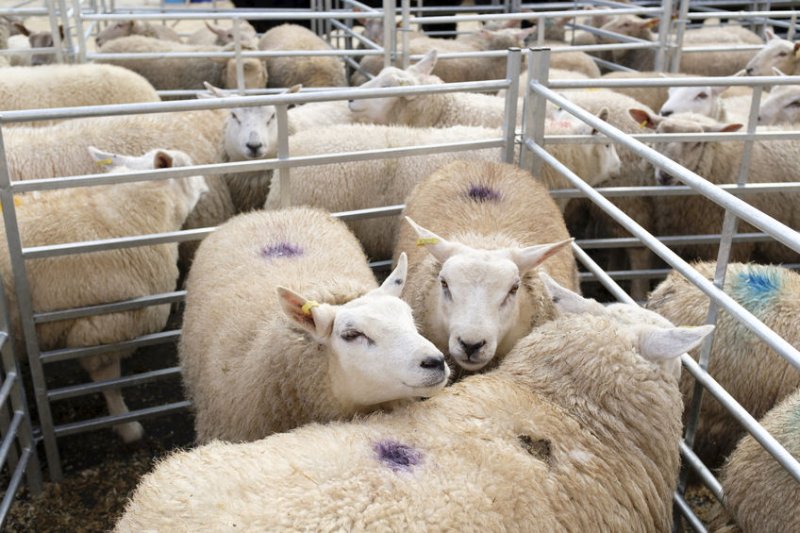
After slipping back in February at Scottish auctions, finished hogg prices recovered through March and opened April at their highest level since the festive period.
According to the latest market commentary from Quality Meat Scotland (QMS), in the week to 6 April, the market cleared at 268p per kg.
Iain Macdonald, QMS senior economics analyst, says that this recent upturn is likely to have been driven by increased consumer demand for the start of Ramadan, which began at the turn of the month, and then Easter, which is in mid-April this year.
A general tightness of the sheepmeat market is also reflected in the cull sheep price, with ewes and rams averaging £107 per head in late March and early April, up from an average of £92 in the first 12 weeks of the year.
However, hogg prices at Scottish marts have been running 5-10% below the highs of early 2021 since the beginning of February and the recent upturn has not led to a change in this position.
Mr Macdonald observes that this is likely to reflect a recovery in supply from the low levels seen in the first third of 2021.
"On the production side, this season’s lamb crop has arrived later onto the market, compared to the early delivery profile in 2020/21.
"As a result, there has been an increased carryover of hoggs this season, with Sheep and Goat Inventory results showing a 4% increase in Scotland, and a 9% uplift in England.”
Sheepmeat production statistics from Defra up to February show a 9% rebound in production compared to early 2021 and, after adjusting for imports and exports, the overall balance of supply in the market is estimated to have shown a similar year-on-year increase.
“Despite failing to match last year’s highs, hogg prices have held up historically, exceeding their five-year average by 10-20% in recent weeks.
This shows that the market has remained tight in an historical context, with supply on the UK market in the opening two months of the year well below the levels seen between 2016 and 2019,” says Mr Macdonald.
With lambing over in some parts of the country and just getting going in others, thoughts will soon be turning to the outlook for the new season lamb market.
“The Met Office has reported a relatively mild winter in 2021/22 with below average levels of rainfall and this pattern continued through March.
"Therefore, it seems likely that the strong lambing performance of recent years will have continued in Scotland. However, the December Sheep and Goat Inventory did indicate a 3% reduction in Scotland’s breeding flock, so it seems likely that we will end up with a smaller lamb crop this year.”
Meanwhile, in England, the breeding flock was reported to have been slightly smaller in December 2021 than a year earlier, down by 1.2%.
Mr Macdonald said: “Combining the results from north and south of the border, for the lamb crop to match last year’s levels across Britain, it seems that we would need to see an increase in the lambing percentage.
"However, given the slower marketing profile in 2021, production volumes may hold up this year through summer and into autumn even if there are slightly fewer lambs born this spring."
He added: “For a complete picture of the supply-side outlook, we need to consider imports and exports. In recent years, imports have dipped towards 20% of market supply while around 30% of production has been exported.
“With sheepmeat prices remaining at attractive levels in China and New Zealand having a similar number of lambs this season, it seems unlikely that import volumes will rebound significantly from the low levels of recent years."
For exports, 2021 was a difficult year with the introduction of EU border controls constraining volumes along with reduced domestic production.
However, by autumn, the share of production exported had returned to year earlier levels, Mr Macdonald explained.
"In 2022, a general tightness in EU meat markets and a 3% reduction in the breeding flock may lead to increased demand for sheepmeat from the UK, and any increase in UK exports removes supply from the domestic market.
“Combining the outlook for new season production and trade suggests that the UK sheepmeat market will remain tightly supplied in summer and autumn 2022, pointing to a continuation of positive returns for producers."
